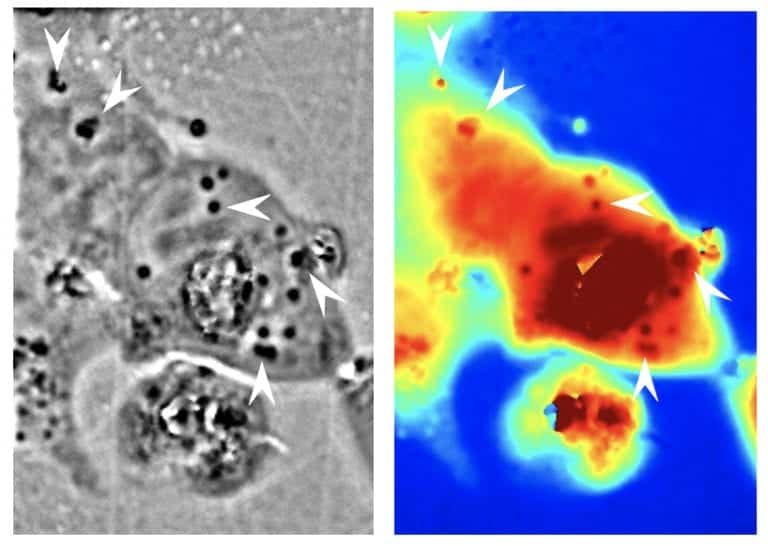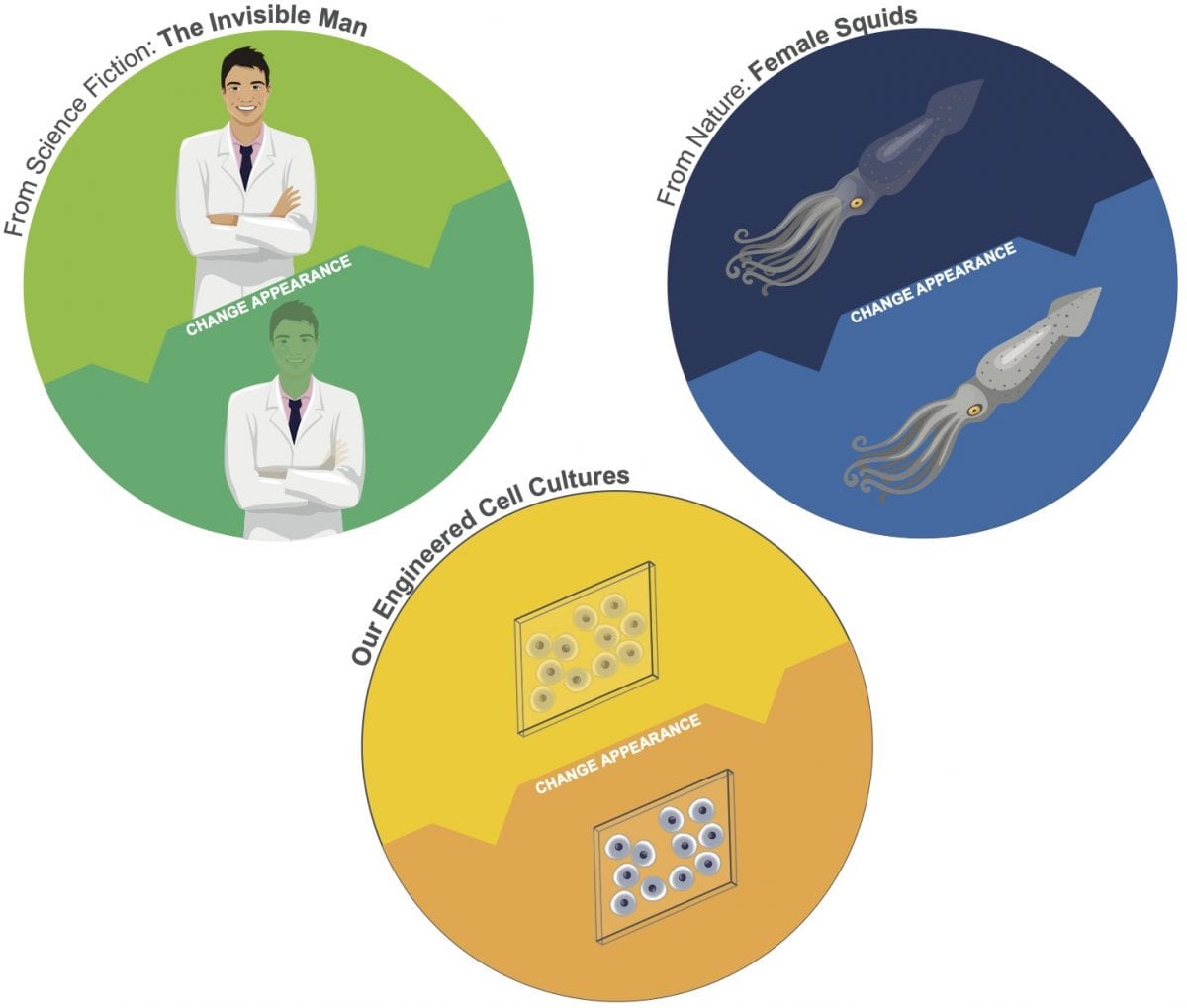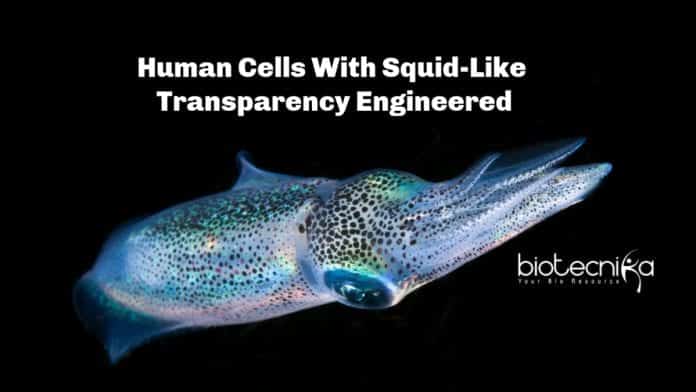Transparent Human Cells Like Squid Developed By University of California
Sea creatures like Octopuses, squids, etc use specialized tissues in their bodies to control the transmission and reflection of light and perform a disappearing act. Human cells were engineered by scientists at the University of California (UCI) to develop cells having similar abilities to become transparent.
The research is published in a peer-reviewed open access scientific journal Nature Communications. How the researchers drew ideas from cephalopod’s skin to enable mammalian cells with tunable transparency and light-scattering properties was explained in the published paper.

Atrouli Chatterjee, Lead author, a UCI doctoral student in chemical & biomolecular engineering, said “For thousands of years, people have been amazed by transparency and invisibility, which have influenced philosophical conjecture, works of science fiction, as well as academic research”. “Engineering and designing cellular systems and
cells with manageable properties for lights’ transmission, reflection, and absorption was the focus of this study”.Atrouli works in the lab of Alon Gorodetsky, co-author, associate professor of chemical & biomolecular engineering, UCI, who has a long background of analyzing how cephalopods’ color-changing capacities can benefit humans by mimicking its abilities to develop special technologies. Breakthrough developments in infrared camouflage and various other innovative products have resulted in his team’s bioinspired research.
Female Doryteuthis opalescens squids escape killers by effectively switching a stripe on their mantle to white opaque from nearly transparent, and this method was used by the team for the study. The scientists then obtained several of the intercellular protein-based particles associated with this biological cloaking method and discovered a method to introduce them into human cells to evaluate whether the light-scattering powers are transferable to various other animals.
These types of squid have leucophores – specialized reflective cells, which can alter – ‘how they scatter light’. These leucophores cells have are leucosomes, which can produce which iridescent camouflage. The leucosomes are membrane-bound particles composed of reflection proteins.
The experiment:
Human embryonic kidney cells were cultured and then made them to express the reflection protein by genetic engineering. They discovered that in the cells’ cytoplasm the protein would certainly assemble into particles in a disordered form. Using optical microscopy and spectroscopy it was seen that their scattering of light transformed due to the introduced reflectin-based structures.
Gorodetsky said, “The protein was packaged in spheroidal nanostructures and distributed throughout the cells’ bodies however it was fascinating to discover that the cells not only expressed reflectin”. “We were able to determine using quantitative phase microscopy that the protein structures had various optical features when compared to the cytoplasm inside the cells; simply put, they optically behaved almost as they do in cephalopod leucophores, which is their native cells”.

Additionally, the study also tested whether using external stimuli, the reflectance could potentially be toggled on and off. The team sandwiched cells between coated glass plates and applied sodium chloride of various concentrations. Determining the amount of light that was transferred by the cells, they found that the ones subjected to higher sodium levels scatter much more light and also stood apart from the surroundings.
Chatterjee added, “Explaining a prospective valuable method for adjusting light-scattering properties in human cells – Our experiments revealed that these impacts appeared in the engineered cells yet not in cells that did not have the reflectin particles”.
Gorodetsky claimed, his research team can offer some concrete advantages in the near term, while invisible humans are still securely in the world of sci-fi.
Gorodetsky added, “The possibility of developing human cells with stimuli-responsive optical properties inspired by leucophores in cephalopods was revealed by this study. It reveals that even in foreign cellular environments, these incredible reflectin proteins can maintain their properties”.
Gorodetsky added, the new information additionally can open up the opportunity of using reflectins for clinical and biological microscopy techniques as a new type of biomolecular marker.
The research was supported by the Defense Applied Research Projects Agency and the Air Force Office of Scientific Research, which also included researchers from the University of California and Hamamatsu Photonics.
Author: Sruthi S






























